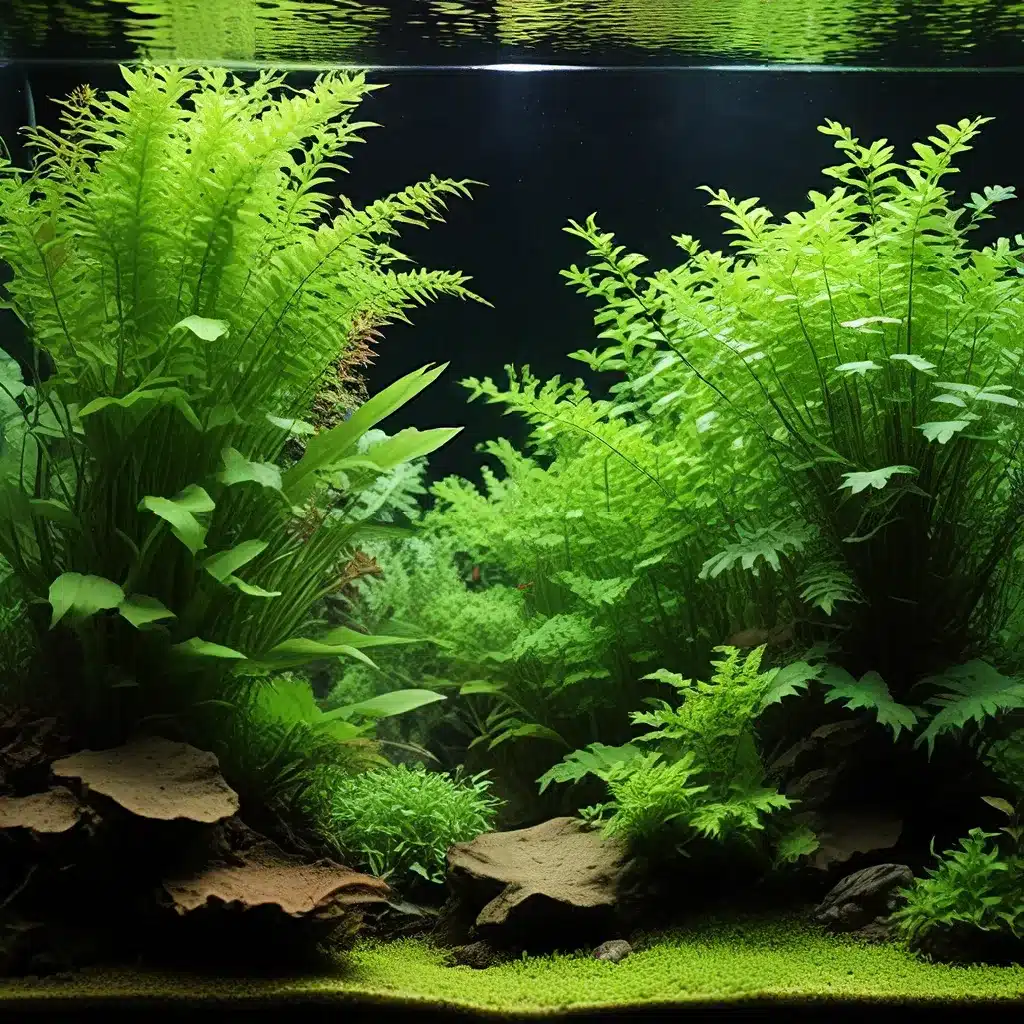
As avid aquarium enthusiasts, we understand the importance of maintaining a thriving underwater ecosystem. At the heart of this ecosystem lies the delicate balance of nutrients, essential for the lush growth and vibrant health of our aquatic plants. In this comprehensive guide, we’ll explore the intricate world of nutrient dynamics, empowering you with the knowledge and strategies to cultivate a flourishing planted aquarium.
Unlocking the Secrets of Nutrient Availability
The success of aquarium plants is largely dependent on the availability and proper management of essential nutrients. These nutrients, including nitrogen, phosphorus, and potassium, play crucial roles in various plant processes, from photosynthesis to cellular development. Understanding the dynamics of nutrient uptake and distribution within the aquarium is the key to optimizing plant growth and preventing deficiencies.
One of the primary factors influencing nutrient availability is the water chemistry. Parameters such as pH, water hardness, and temperature can significantly impact the solubility and accessibility of essential nutrients. By carefully monitoring and adjusting these water parameters, you can create an environment that caters to the specific needs of your aquarium plants.
Crafting a Balanced Nutrient Regime
Achieving a well-balanced nutrient regime in your aquarium requires a multifaceted approach. It’s not simply about adding fertilizers or supplements – it’s about understanding the delicate interplay between plants, substrate, and water column.
Substrate Selection: The choice of substrate can greatly influence the availability and release of nutrients. Nutrient-rich substrates, such as those enriched with aquarium-specific substrates, can provide a steady supply of essential nutrients to your plants, promoting robust growth and vibrant coloration.
Balanced Fertilization: Carefully selecting and dosing the appropriate fertilizers, whether liquid or dry, is crucial for maintaining a harmonious nutrient balance. Pay attention to the N-P-K ratio (nitrogen-phosphorus-potassium) and experiment with different combinations to find the optimal formula for your specific aquarium setup.
Carbon Supplementation: The addition of CO2 (carbon dioxide) can significantly enhance plant growth and nutrient uptake. By providing a reliable source of carbon, you can unlock the full potential of your aquarium’s nutrient dynamics, leading to lush, vibrant plant life.
Addressing Nutrient Deficiencies and Imbalances
Even with a well-designed nutrient regime, aquarium plants may occasionally exhibit signs of nutrient deficiencies or imbalances. Recognizing these issues and taking prompt action is essential for maintaining the overall health and vitality of your underwater oasis.
Identifying Deficiencies: Keep a close eye on your plants for any telltale signs of nutrient deficiencies, such as stunted growth, discoloration, or unusual leaf patterns. By identifying the specific nutrient that is lacking, you can target your approach and make the necessary adjustments to your fertilization and water management practices.
Mitigating Imbalances: Nutrient imbalances can arise from various factors, including overfeeding, excessive plant biomass, or inefficient filtration. By carefully monitoring water parameters and conducting regular water changes, you can restore the delicate balance and promote the overall health of your aquarium plants.
Integrating Aquascaping Techniques
Aquascaping, the art of designing and arranging aquatic plants, can greatly influence the nutrient dynamics within your aquarium. By thoughtfully incorporating aquascaping techniques, you can not only create visually stunning layouts but also optimize nutrient distribution and availability.
Zoning and Layering: Strategically positioning plants in different zones or layers of the aquarium can enhance nutrient uptake and circulation. This approach allows for targeted nutrient delivery and ensures that each plant receives the necessary resources for optimal growth.
Hardscape Integration: Incorporating driftwood, rocks, and other hardscape elements can introduce additional surfaces for beneficial biofilm and microbial communities to thrive. These microorganisms play a crucial role in breaking down organic matter and recycling nutrients, supporting the overall health of your aquarium plants.
Nutrient-Retaining Substrates: The selection of specialized substrates, such as those enriched with clay or zeolite, can enhance the aquarium’s ability to retain and slowly release essential nutrients over time. This can help maintain a more stable and consistent nutrient supply for your plants.
By combining the principles of nutrient dynamics with innovative aquascaping techniques, you can create a thriving, self-sustaining ecosystem that not only captivates the eye but also nourishes the very foundation of your aquatic plant life.
Monitoring and Maintenance
Maintaining a healthy, nutrient-balanced aquarium requires a vigilant approach to monitoring and regular maintenance. Consistent water testing, targeted nutrient supplementation, and strategic water changes are the pillars of a successful planted aquarium.
Water Testing: Regularly testing the water for parameters such as pH, hardness, nitrates, phosphates, and iron levels can help you identify any imbalances or fluctuations that may be impacting your plants’ growth and health.
Targeted Supplementation: Based on the insights gained from water testing, you can fine-tune your nutrient supplementation, adding targeted fertilizers or supplements to address any deficiencies or excesses.
Routine Water Changes: Performing periodic water changes is essential for maintaining optimal water quality and flushing out any accumulated waste or excess nutrients. By replacing a portion of the water with fresh, dechlorinated water, you can replenish essential elements and prevent the buildup of harmful substances.
By embracing this holistic approach to nutrient management, you’ll unlock the true potential of your aquarium plants, creating a thriving, visually stunning underwater landscape that will captivate both you and your guests.
Remember, the journey of aquarium plant cultivation is an ever-evolving process, filled with experimentation and a continuous pursuit of knowledge. Stay curious, stay adaptable, and let your passion for aquascaping guide you to new heights of aquarium excellence. Happy planting!

